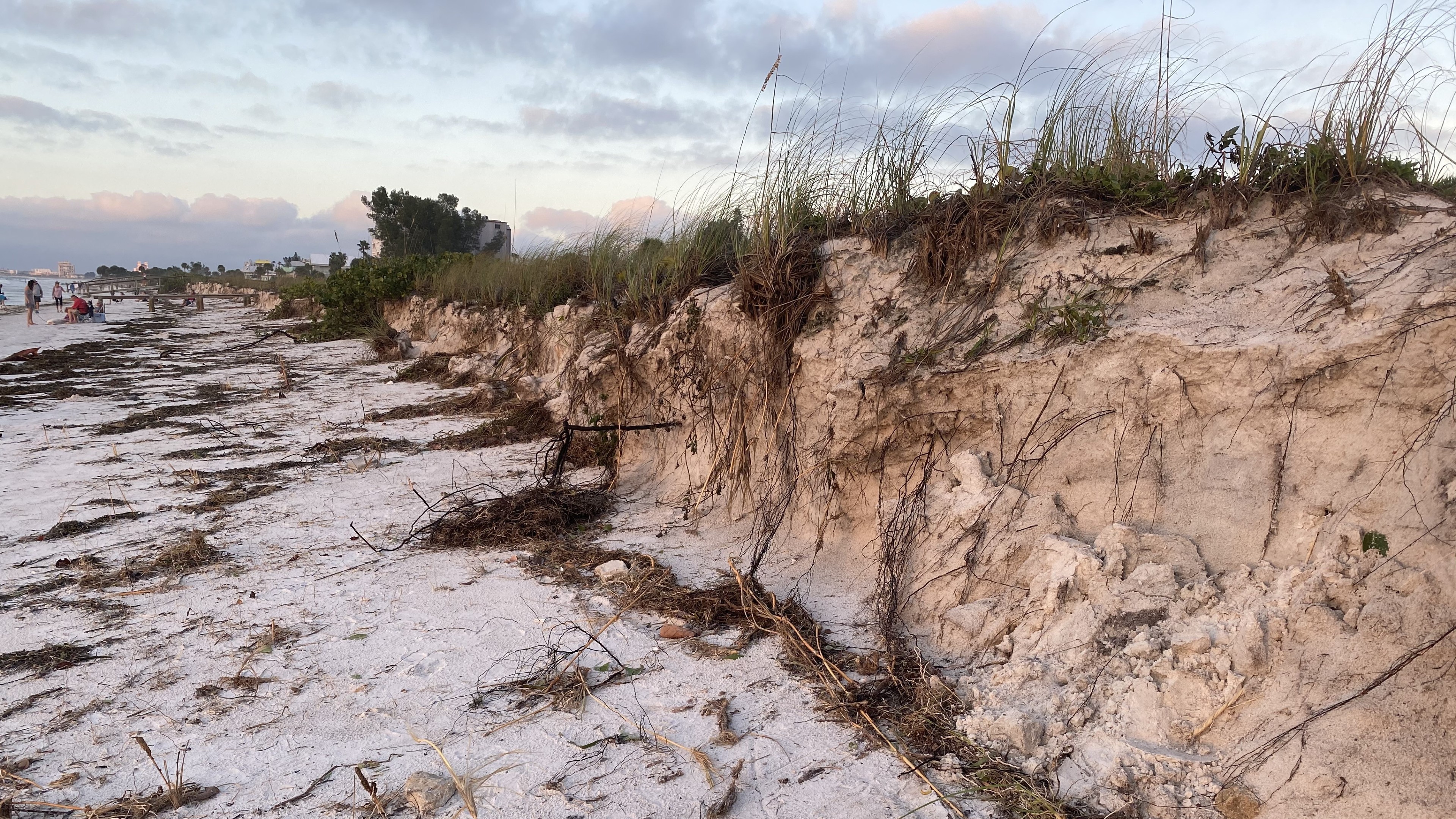As beach preservationist continue to measure the erosion damage done by Tropical Storm Eta, concerns are being raised about how that erosion may affect sea turtles nesting in the spring.
Along the shores of Pinellas County, significant erosion created a escarpment – a vertical ledge of sand – roughly 30 feet from the water.
“If the beach has been under attack with erosion, they will not nest there.” Bruno Falkenstein with Sea Turtle Trackers explained.
”And if they do nest there, there’s a better chance that the eggs will be washed out.”

Beach erosion after Tropical Storm Eta in Pinellas County, Fla. (Trevor Pettiford/Spectrum News)
Loggerhead turtles come on shore in May to lay their eggs. The gestation period lasts for about 60 days, ending sometime in October.
“It’s going to be that the turtles can’t naturally go up past that escarpment. So they’re going to lay right in front of the escarpment,” Falkenstein said.
“Now turtle eggs are air breathers. Depending upon the tide that the water goes over the nest, it could kill all of them.”
Spectrum Bay News 9 asked Clearwater Marine Aquarium to weigh in on the risk. CMA sent this statement:
"Erosion itself can impact sea turtle nesting in different ways. Erosion that is caused within a single nesting season (May 1 – October 31, Pinellas County) can expose clutches of eggs to the external environment, which will likely result in those eggs not surviving.
The good news is that the species that primarily lays eggs in Pinellas County, the loggerhead sea turtle, typically deposits multiple clutches per individual, per season. That means that while one nest may not survive, hopefully other nests will.
Erosion often leaves escarpments, or vertical walls of sand, on the beach as well. These can make it more difficult for nesting females to access preferred nesting habitat higher on the beach. Over time, continuous erosion can reduce the amount of available beach, and therefore viable nesting habitat, which can reduce nest success."



